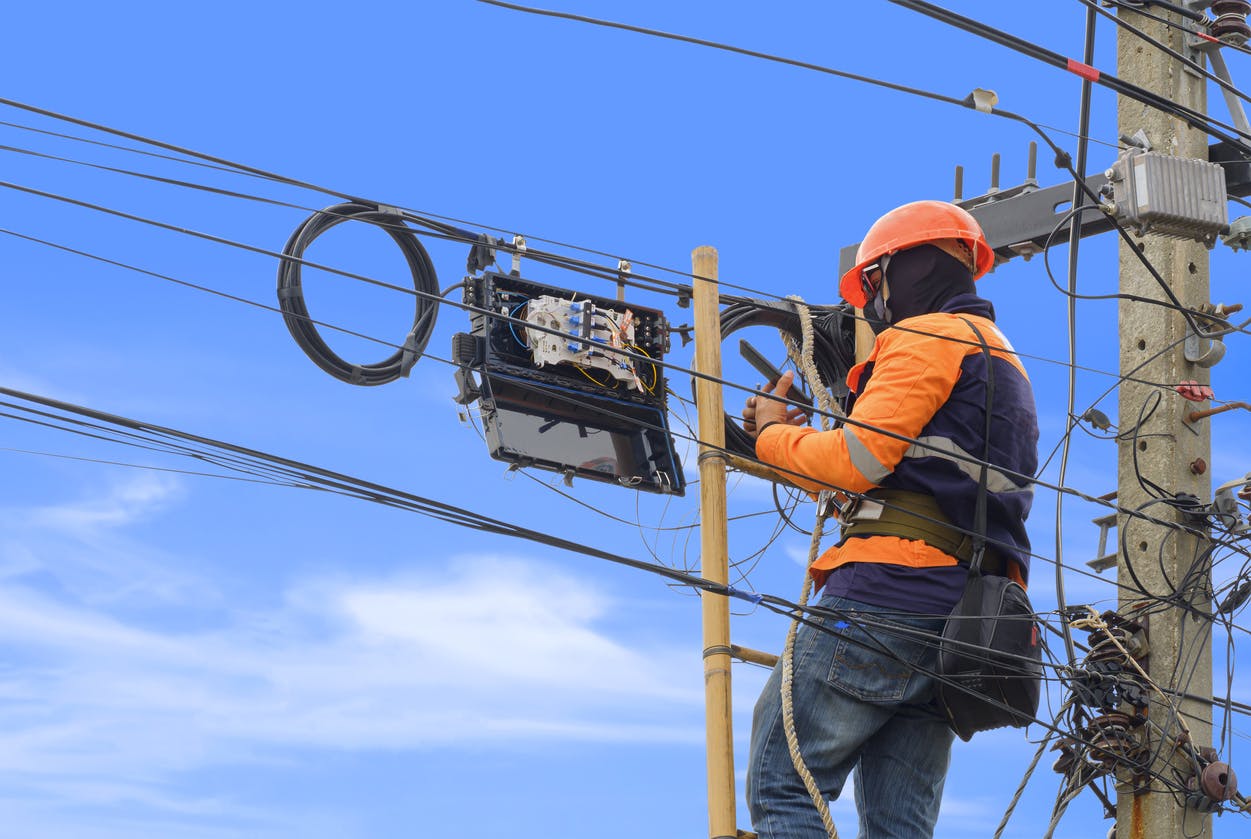While the United Kingdom stands among the countries with the quickest roll-out acceleration, the Telegraph recently revealed that Openreach is intensifying efforts to improve the conformity of fibre reports provided by alternative network providers (Altnets). This article outlines the reasons for their non-conformity issues and explains how Visual AI can help Altnets stay competitive in fibre deployment in the UK.

Reasons for Non-Compliance Among Altnets
Openreach's recent data states that the average compliance rate is a mere 63%, with some Altnets falling as low as 20%. To end this quality crisis, BT has issued a three-month deadline for Altnets to achieve a 90 percent compliance target, warning that failure to meet this goal would require formal improvement plans and that persistent non-compliance may result in exclusion from accessing BT's network by the end of the year.
Unexploitable Fibre Reports
To build their fibre network using Openreach’s infrastructure (ducts and poles), alternative network providers and their build partners must provide forms with photos to document their work. Currently, many Altnets are failing to conduct thorough checks before submission to Openreach, leading to high non-compliance rates. Rejection causes include missing, blurry or poorly framed photos, missing data on forms, etc.
Late Detection of Errors and Oversights
Some Altnets rely on manual quality control processes to check the forms and photos submitted by their field workers and build partners. Unfortunately, this tends to exacerbate compliance problems, as manual inspections only occur once the field worker is gone, leaving potential errors or oversights behind. As a result, Altnets see their reports rejected by Openreach due to a lack of conformity to the work done on the network.
Consequences of Non-Compliance for Alternative Network Providers
Failure to comply with Openreach's framework can lead to severe consequences for Altnets, including hefty fines and bottleneck in fibre deployment. Non-compliance can also result in operational disruptions, poor service quality, and customer dissatisfaction.
In addition, BT has warned that continued non-compliance could jeopardize Altnet's ability to operate on Openreach's network, potentially leading to business closure.

The Role of Visual AI for Altnets
Understanding Visual AI
The technology behind Visual AI, called Computer Vision, allows machines to observe, analyze, and comprehend, ultimately understanding their environment as humans do. Unlike human vision, these "visual senses" are powered by cameras and sophisticated algorithms that can swiftly and accurately analyze data. This technology has become integral in various industries, including fibre optic deployment. It automatically analyzes photos taken by field engineers during fiber optic construction, service activation, and maintenance, providing real-time feedback on the accuracy and quality of the work.
Real-Time Quality Control to accelerate PIA forms acceptance
Visual AI solutions provide real-time quality checks, ensuring that the photos supplied by field workers are exploitable and that every aspect of the job carried out on the network meets the required standards. By analyzing visual data in real-time, these systems quickly identify issues for field technicians to rectify, thereby maintaining a high compliance rate. This immediate detection and correction allow alternative network providers to accelerate the validation of the PIA documentation they submit to Openreach and ensure that their build partners comply with the quality standards imposed by Openreach.

Benefits of Visual AI for Altnets
Quality Compliance at Scale
Thanks to Visual AI, altnets can automate quality control directly in the field to ensure each operation carried out on Openreach’s infrastructure is verified while the field workers are still on site. This systematic application of quality standards is effective even in multi-party chains, ensuring compliance at scale.
Error Reduction and Cost Savings
By leveraging Visual AI, Altnets can minimize human errors, often the primary cause of compliance failures. Additionally, these solutions lead to substantial cost savings by reducing the need for manual inspections and interventions. Automating compliance processes ensures that resources are utilized more efficiently, leading to better financial performance.
Several UK telecom companies have successfully implemented an AI-driven quality control compliance solution, which has helped meet compliance standards and optimized operational processes. A notable example is Connect Fibre, one of the UK’s prominent broadband Alternative Network providers, which has chosen to deploy Computer Vision to reduce PIA documentation quality control costs, limit penalties, and meet deployment deadlines by enhancing field teams’ first-time right rate. CityFibre has also been using the technology, saving 55 minutes controlling each of its operations and avoiding 3 to 4 incident visits on site today.
In summary, enhancing compliance in telecom infrastructure is imperative for Altnets’ operational success and long-term business. BT's new compliance requirements underline the need for advanced solutions to meet these standards. Visual AI provides a robust framework for achieving and maintaining high compliance rates. Adopting these technologies ensures adherence to regulatory standards and drives operational efficiency and cost savings.





